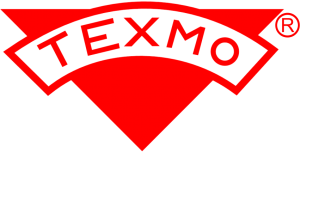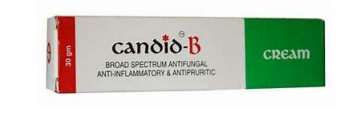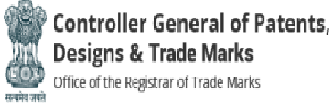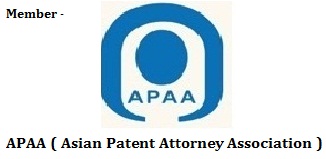In a signal that China may soften its stand against social networking giant Facebook, the Beijing High Court has ruled in favour of the Cupertino-based company, saying that a Chinese company should not have been allowed to register the “face book” trademark back in 2014. Beijing, May 9: In a signal that China may soften its stand against social networking giant Facebook, the Beijing High Court has ruled in favour of the Cupertino-based company, saying that a Chinese company should not have been allowed to register the “face book” trademark back in 2014.
The Zhongshan Pearl River Drinks Factory in southern Guangdong province that had registered the brand name “face book,” produces food products like potato chips and canned vegetables. “Under the Chinese law, a multinational with a globally-recognised brand must prove that its trademark is also well known within China,”
The Financial Times reported on Monday.(ALSO READ:Apple loses Chinese lawsuit over iPhone name).Along with other social media platforms like Twitter, Facebook is currently blocked to nearly 700 million internet users in China. Burt several many people are using virtual private networks (VPNs) which allow them to circumvent the “Great Firewall” to access the site.
Facebook CEO Mark Zuckerberg has been trying to break the ice with China for years. He met Chinese President Xi Jinping during his visit to the US last year.The Facebook founder has also met China’s chief censor officer at his home in San Francisco and reportedly had a meeting with the head of the ruling Communist party’s propaganda apparatus.
In March this year, Zuckerberg was seen jogging through Tiananmen Square with the famous gate to the Forbidden City imperial palace in the background. He was in Beijing to attend the China Development Forum 2016. Zuckerberg also met Alibaba Group Holdings’s executive chairman Jack Ma and discussed about innovation during the visit. Ma said Zuckerberg respected Chinese culture, adding that oriental culture and western culture should learn from each other and work collaboratively for a better future.
Last week, Apple lost an appeal in China for its iPhone trademark when a lower court ruled that a Chinese company Xintong Tiandi can use the “iPhone” mark on its leather goods.
“Apple is disappointed the Beijing Higher People’s Court chose to allow Xintong to use the ‘iPhone’ mark for leather goods when we have prevailed in several other cases against Xintong,” the company said in a statement.
“We intend to request a retrial with the Supreme People’s Court and will continue to vigorously protect our trademark rights. We work hard to make the best products in the world and want to ensure our customers’ experience is not compromised by companies who try to profit from using our brand,” Apple added.
Apple was set to appeal against the verdict in a higher court.
Meaning of John Doe –
MEANING AND ORIGIN ‘John Doe’ has its origin in the reign of England’s King Edward III when the orders were used to refer to unidentifiable defendant. Oxford Dictionary defines John Doe as an “Anonymous Party”. In Canada, John Doe order were resorted to by owners of IPR in order to preserve evidence against unknown infringers by allowing the representatives of the Plaintiff to search and seize infringed products. Once identified the term John Doe is replaced with the name of the Defendant . It is an established concept in America, Australia and UK. In the matter of Billy Joel v. Various John Does , a popular order which has been consistently relied upon by parties it has been interalia held: “Were the Injunction to be denied, Plaintiffs would be without any legal means to prevent what is clearly a blatant infringement of their valid property rights. While the proposed remedy is novel, that in itself should not weigh against its adoption by this Court. A court of equity is free to fashion whatever remedies will adequately protect the rights for the parties before it.
Example Case –
Calcutta High Court: A Single Judge Bench comprising of Soumen Sen, J., addressed the grievance of the petitioner who has prayed for the passing of “John Doe” order against the respondents who are responsible for the infringement of petitioner’s copyright and trademark.
The brief facts of the case are that the petitioner is involved in the business of B2B e-commerce portal and since its inception in the year 1996, he had coined and adopted a unique mark known as “INDIAMART” for use in connection with the goods and services falling under various categories. He also claims that he has been using the said mark regularly and also got it registered in various forms as a wordmark, logo mark, label mark, and device mark. The petitioner has furnished all the details for the said registrations.
In regard to the copyright and trademark infringement, petitioner became aware of respondent’s having slavishly imitated the petitioner’s unique mark “INDIAMART” in one form or the other. For the said claim, petitioner’s have successfully disclosed all the copies which show that the petitioner’s mark is being infringed. One of the claims being put forward by the petitioner is that clearly the respondent’s have tried to confuse and deceive the public over the reputation of the plaintiff’s mark. Further, it has been stated by the petitioner that the respondents have infringed the copyright of the petitioner by using the proprietary information/data including such information, etc. which comes under the literary works of the petitioner.
Therefore, the petitioner has demanded the blocking of such websites which clearly are constituting to piracy and violation of the copyright and trademark use of the petitioner and on that note, he has prayed for John Doe orders of injunction.
The Hon’ble High Court, by recording the documents furnished by the petitioner and the fact that respondents have slavishly imitated the trademark of the petitioner which brings the Court to the claim of the petitioner about its goodwill and thereby allowing the relief to the petitioner as prayed for and concluding by giving direction to the petitioner to communicate this order to all the defendants. [Indiamart Intermesh Ltd. v. Ankit; 2018 SCC OnLine Cal 2379; dated 16-05-2018]
COMPLEXITIES in John Doe –
Since the concept of granting John Doe order has evolved from judicial proactiveness it is tough to determine its precise limits. The procedure that needs to be followed in granting and executing these orders vary with regard to the cases in which it has been granted. The John Doe orders may thus lead to many complexities which may include the following.
- Improper implementation of orders: John Doe orders may be improperly implementedand may harm the rights of the legitimate third parties. In the Singham case , after obtaining the order the Plaintiff sent a list of file sharing sites to ISPs, asking them to stop them from pirating the movie. The ISPs, unable to prevent piracy, blocked entire file sharing websites. Consequently, many users who use these sites for legitimate purposes were unable to access the sites. It is pertinent to note thatin the case of IPRS v. Mr. Badal Dhar Chowdhry , the Court held that vague/ indefinite injunctions should not be issued.
- Jurisdiction of the defendants: When 100 John Does are named in a single case based solely on numerical internet protocol addresses. Many of them are outside the jurisdiction of theCourts. Thus, a question may arise whether the cause of action has arisen within the jurisdiction of the Courts.
- Joining different defendants in one suit: Another question to be considered in such cases is whether the defendants residing in different jurisdictions can be joined as defendants in the same suit. John Doe is still in its nascent stage in India and the concept will eventually evolve when more cases are brought before the Court. John Doe orders are always passed subject to the legitimate rights of the parties and do not affect the rights of legitimate license holders in any manner. However, the Bombay High Court, in the recent pasthas taken a view that such blanket orders cannot be passed unless the Plaintiff can show actual incidents of breach or acts which are likely to result in such a breach . Moreover the actual implementation of the orders is in itself a challenge for the Plaintiff. It is important for the judiciary to lay down the precise nature and limit of such orders so that they are effectively implemented and/or would aid in effective enforcement of the Orders.
The Delhi High Court has held that Copyright registration of an art work is irrelevant for the purpose of proving its use as Trade Mark.
The order was passed by a Single Judge Bench of Justice Suresh Kait in a challenge to the Intellectual Property Appellate Board’s (IPAB) order dismissing the Petitioner’s plea seeking registration of its trademark.
By way of background, M/s Khushi Ram Behari Lal (Export Division) was established in 1978 and carried on the business of processing, marketing and exporting of rice. The rice was sold under the trademark ‘TRAIN BRAND WITH DEVICE OF TRAIN’ (trademark).
In 1996, the Firm was taken over as a going concern by the Petitioner, M/s. Khushi Ram Behari Lal Ltd. Subsequently, the name of M/s. Khushi Ram Behari Lal Ltd. was changed to be M/s. KRBL Ltd. In order to acquire the statutory rights for the trademark, the Petitioner filed an application for its registration in class 30 of the IV Schedule of the then Trade & Merchandise Marks Act, 1958 before the Registrar of Trade Marks in 1993.
After the Trade Marks Registry advertised the concerned trademark in Trade Marks Journal, the Respondent filed a notice of opposition on the grounds that it was also engaged in the business of Rice under the Trade Mark “TRAIN” which was registered since 1983.
After considering the rival contentions of the parties, the Registrar dismissed Petitioner’s Form TM-16 and refused the application for registration of the said trademark.
Aggrieved by the rejection, the Petitioner approached the IPAB which ultimately dismissed the appeal on the ground that the Respondents had adopted and registered the trade mark prior in point of time. The IPAB relied upon the Copyright Registration of Respondent over the art work ‘Train’ to establish its usage by the Respondent and thus held that Petitioner’s registration plea was hit by Section 9, 11 and 18 of the Act of 1999.
Setting aside the IPAB order, the Delhi High Court noted that the IPAB had not only ignored the fact that Respondent’s registration was only for the word ‘TRAIN’ but it also ignored the fact that the Respondent tried to prove the use at the time of his registration by forged and fabricated documents.
After perusing the invoices issued by the Respondent to establish user of the trademark, the Court noted that the device of the TRAIN brand is not the same on all the invoices, apart from having various other discrepancies.
It also rejected the IPAB’s reliance on the Respondent’s copyright registration over the art work ‘Train’ for the purpose of proving use of the trademark (in question). Holding that Copyright registration is extraneous for proving its use as Trade mark, the Court held:
“On perusal of the documents on record, I have no hesitation to say that the learned Appellate Board has relied on the Copy Right Registration of respondent under No. A44877/84. The Copy Right Registration of the art work of “TRAIN” brand is extraneous for the purpose of proving the use subject Trade Mark“.
Furthermore, the Court stated that the IPAB also failed to appreciate that the said trademark registration had been in use by the Petitioner under registration for almost 22 years without any interruption. For all those years, the Court observed, there was no confusion and deception reported by the Respondent.
“The goods of the petitioner bearing the subject matter trade mark is highly demanded not only in the domestic but also in international market viz. Reyadh, Dubai, Jeddah, Dammam, Saudi Arabia etc. on account of their superior quality, on the other hand the respondent is admittedly a dealer/commission agent based in Amritsar.”, it said.
Thus, the IPAB ought to have appreciated the special circumstances existing in favour of the petitioner for exercise of their discretion under Section 12 of the Act, it held.
Observing that the registration of the impugned trademark fulfilled the requirement for registration as prescribed in Trade Marks Act, 1999, the Court held that the Petitioner was entitled to the benefit of Section 12 of the Act for concurrent registration.
It thus decreed,
“In view of above facts discussed and legal position, I hereby set aside the impugned order dated 18.05.2012 passed by the Appellate Board and consequently, the application for registration of the Trade Mark “TRAIN” under No. 609141 in Clause 30 shall be proceeded for registration of the Trade Mark “TRAIN” brand for basamati rice. The writ petition is disposed of in the aforesaid terms.”
The Petitioner was represented by Advocates Ajay Amitabh Suman, Pankaj Kumar, Kapil Kumarand Vinay Kumar Shukla.
The Respondent remained unrepresented.
After a long legal battles against firms working on open source technologies, Microsoft is now joining the Open Invention Network (“OIN”), a community dedicated to protecting Linux and other open source software programmes from patent risk. the decision reflects a change in attitude of the software giant which earlier considered open sources technologies a threat to its business and alleged that these technologies violated their patent rights.

“We know Microsoft’s decision to join OIN may be viewed as surprising to some , it is no secret that there has been friction in the past between Microsoft and the open source community over the issue of patents,” Erich Andersen, Corporate Vice President and Deputy General Counsel at Microsoft wrote in a blog post on Wednesday.
“For others who have followed our evolution, we hope this announcement will be viewed as the next logical step for a company that is listening to customers and developers and is firmly committed to Linux and other open source programmes,” Andersen added.
Microsoft said it would bring a valuable and deep portfolio of over 60,000 issued patents to OIN. “Now, as we join OIN, we believe Microsoft will be able to do more than ever to help protect Linux and other important open source workloads from patent assertions,” Andersen said.
“Joining OIN reflects Microsoft’s patent practice evolving in lock-step with the company’s views on Linux and open source more generally.”
Change at Microsoft, Andersen said, began over two years ago through programmes like Azure IP Advantage, which extended Microsoft’s indemnification pledge to open source software powering Azure services.
“We doubled down on this new approach when we stood with Red Hat and others to apply GPL v. 3 “cure” principles to GPL v. 2 code, and when we recently joined the LOT Network, an organisation dedicated to addressing patent abuse by companies in the business of assertion,” Andersen said.since its founding in 2005, OIN has been at the forefront of helping companies manage patent risks. It has more than 2,650 members, including numerous Fortune 500 enterprises. ” through its participation in OIN, Microsoft is explicitly acknowledging the importance of open source software to its future growth,” Keith Bergelt, CEO of Open Invention network, said in a statement.
Trademark infringement suit , Texmo Industries inter alia prayed that their mark, TEXMO, be declared as a well-known mark under Section 11 & section 2 (zg ) of the Trade Marks Act, 1999. under sub-sections (6)-(9), this section lays down a number of factors that must be considered before granting well-known status to a mark. however, in this particular case, the issue that was raised, was whether the High Court had the power to declare a mark as well-known.

This question arises primarily due to the text of Section 11(6)-(9), which mentions the Registrar as the authority when determining whether a mark is well-known. It seems, therefore, that the Registrar has the power to determine whether a mark is well-known. However, in practice, courts have declared marks to be well-known , for instance , in the Tata Sons case or Brahmos Aerospace case (covered on the blog here and here).
Court argued that only the Registrar has the power to accord well-known status to marks, but referred the question to a higher bench due to differing views from benches of similar strength. according to the court, the text of Section 11 makes it clear that the Registrar is the proper authority. Further, it stated that the Registrar is more suited to make investigations on this question, since it has the requisite expertise and capability to do so. specifically, the court noted that it cannot give a complete answer for the following factors:
- the extent of knowledge of the mark to, and its recognition by the relevant public,
- the duration of the use of the mark
- the extent of the products and services in relation to which the mark is being used
- the method, frequency, extent and duration of advertising and promotion of the mark
- the geographical extent of the trading area in which the mark is used
- the state of registration of the mark
- the volume of business of the goods or services sold under that mark
- the volume of business of the goods or services sold under that mark
- the nature and extent of the use of same or similar mark
- actual or potential number of persons consuming goods or availing services being sold under that brand
While the Registrar does seem to be well-placed to make a decision on these factors, it would seem that the court is similarly placed in terms of legal expertise and the power to requisition documents and evidence. If these capabilities are the same, then it would be difficult to agree with the court’s practicality argument. Further, if one were to look at Rules 124-126 of the Trademark Rules 2017, and the specifics of Form TM-M (through which applications for well-known status are to be made), the Registrar does not make or have the power to make any special investigation that is beyond the ability of a court. one would also wonder how the renouncing the power to declare marks as well-known to the sole domain of the Registrar would play out in cases where the plaintiff couches their cause of action within the law on well-known marks. would the plaintiff first have to approach the Registry in such circumstances? Further, would the court have the power to hear appeals to the Registrar’s decision in such matters (after following the procedure prescribed in Rule 125 of the Trademark Rules 2017)?

 Apple’s voice assistant Siri may soon become smarter by offering personalised responses to different users speaking to it. As of now, Siri does not have multiuser support, but if a newly granted patent for ‘user profiling for voice input processing’ is any clue, Apple may be introducing the feature. The company had already launched a ‘Personalised Hey Siri’ feature earlier this year, but the voice assistant is not able to distinguish between different users for customised responses. However, that may change soon, meaning “Hey, Siri, read my text messages” would, for instance, yield a different set of responses depending on which family member is talking to the HomePod. Apple has separately filed a patent that details an in-display fingerprint scanner using a new technology, and expected to be made available in upcoming iPhone models.
Apple’s voice assistant Siri may soon become smarter by offering personalised responses to different users speaking to it. As of now, Siri does not have multiuser support, but if a newly granted patent for ‘user profiling for voice input processing’ is any clue, Apple may be introducing the feature. The company had already launched a ‘Personalised Hey Siri’ feature earlier this year, but the voice assistant is not able to distinguish between different users for customised responses. However, that may change soon, meaning “Hey, Siri, read my text messages” would, for instance, yield a different set of responses depending on which family member is talking to the HomePod. Apple has separately filed a patent that details an in-display fingerprint scanner using a new technology, and expected to be made available in upcoming iPhone models.
USPTO – Patent –
“User profiling for voice input processing”.-
First spotted by Apple Insider, the US Patent and Trademark Office (USPTO) has granted a patent to Apple with the title “User profiling for voice input processing”. The key idea presented in the patent is to enable Siri to identify different users, either through a username and password, specific commands, or biometric voice print. Following the identification, Siri would be able to respond using a library of past commands to match a specific user’s content preferences or requests or phrasings.
Till now, it is unclear whether Apple is working on enabling Siri to respond appropriately to different users or just not giving access to any other users. Although the patent was published August 14, it was filed in April 2017. Now the Apple patent reads as – “This is directed to processing voice inputs received by an electronic device. In particular, this is directed to receiving a voice input and identifying the user providing the voice input. The voice input can be processed using a subset of words from a library used to identify the words or phrases of the voice input. The particular subset can be selected such that voice inputs provided by the user are more likely to include words from the subset. The subset of the library can be selected using any suitable approach, including for example based on the user’s interests and words that relate to those interests. For example, the subset can include one or more words related to media items selected by the user for storage on the electronic device, names of the user’s contacts, applications or processes used by the user, or any other words relating to the user’s interactions with the device.” as per a Patently Apple report, another patent application in USPTO reveals that Apple is working on an in-display fingerprint scanner that uses a dielectric sensor, other sensors that overlap, and at least one light source.
The iPhone models in future could be able to get 3D fingerprint ridge data. Rather than sensors, cameras under the display may be used to capture a fingerprint structure in 3D.
New procedure that allows the Registrar to declare trademarks as ‘well known’. The new Rule 124 allows any trade mark owner to file a request in Form TM-M requesting the Registrar to declare a trademark ‘well-known’. As most of our readers may know, the ‘well-known’ tag is the ‘holy grail’ for trademark owners – everybody wants it but very few will get it.

Once a trademark is declared to be ‘well known’, by a Registrar of Trademarks or a court of law, the Trade Mark Registry is bound under the law to not register any trademark that is identical or similar to the ‘well known’ trademark across all classes of goods and services. Similarly at the time of infringement proceedings, a ‘well known’ trademark can be asserted against defendants dealing in entirely different goods or services. For example, ‘Google’ has been declared a well-known trademark under Indian law, which means nobody else but Alphabet Inc. can register ‘Google’ in any of the other class where it has not already been registered by Alphabet or use ‘Google’ to sell goods or services in any industry and not just the internet industry. The commercial implications of being declared a ‘well known’ trademark are therefore tremendous.
Prior to the enactment of Rule 124, a Registrar or a court of law could declare a trademark well known only during opposition, rectification or infringement proceedings. Rule 124 however creates an entirely new procedure to recognize well known trademarks. This procedure is different from opposition, rectification or infringement proceedings in that the latter are adversarial in nature with both parties presenting evidence to back their claims and the Registrar is required to resolve these conflicting claims through a reasoned order. The trigger for these proceedings is a legal event that is not usually within the control of the trademark owner i.e. it is the alleged infringer or opponent who sets in motion the events leading to the proceedings that can result in a trademark being declared ‘well known’. The new Rule 124 allows the trademark owner to set the ball rolling without requiring any infringement or opposition proceedings. The rule does impose some vague duty to “invite objections from the general public” but this process is fundamentally different from opposition, rectification or infringement proceedings where an opposing party has already asserted its rights against the trademark owner.
The crucial question at this juncture is whether Rule 124 is constitutional? Rules, which are delegated legislation, draw their legitimacy from the parent statute. In this case the Trade Mark Rules, 2017 draw their legitimacy from the Trade Marks Act, 1999. This legislation however does not delegate to the Central Government the power to create an entirely new procedure to recognize well known trademarks. Section 157 of the Act which lays out the rule making power of the Central Government under the Trade Marks Act, 1999 is silent on the issue of well known trademarks. There is a residuary provision in Section 157(xli) that gives the Central Government the power to make rules for “any other matter which is required to be or may be prescribed”. Like all provisions conferring residuary powers, this provision is widely drafted however a residuary provision is still bound by the two most important principles of delegating legislative power: The first principle is that delegated legislation cannot be in conflict with the provisions of the parent legislation. Secondly, an essential legislative function cannot be delegated by Parliament to the Executive – the In re Delhi Lawsjudgment is quite clear on this issue.
The new Rule 124, I would argue, goes against both principles. The rule reflects an entirely new policy to recognize “well-known” trademarks through a procedure that is not an adversarial proceeding (as is the case currently). In fact, the new procedure is in conflict with the adversarial procedure recognized in Section 11 for a trademark to be recognized as well known. Unlike the Section 11 procedure which required an opposition, rectification or infringement proceeding to trigger a adjudication on whether the trademark is well-known, Rule 124 allow a trademark to be recognized as well known by simply making an application to the Registry. The requirement to “invite objection” is fundamentally different from an opposition or rectification hearing because it does not guarantee a right to be heard. This entire procedure is alien to the scheme of the Trade Marks Act, 1999.
The true fear with this new procedure is that it places immense powers in the hands of the Trade Mark Registry, which as we all know is one of the more corrupt agencies in the IPO – we are all aware of Registrar’s Kasturi’s arrest and conviction on charges of corruption. The possibility for abuse of power is ably aided by some rather strange provisions in the Trade Marks Act, 1999. In particular Section 11(9) of the Trade Marks Act makes it clear that the Registrar shall not require as a condition, for determining whether a trade is well-known, any of the following, namely: (i) That the TM has been used in India; (ii) That the TM has been registered; (iii) that the application for registration of the trade mark has been filed in India; (iv) that the trade mark is well known in or registered in any other jurisdiction other than India (v) that the trademark is well-known to the public at large in India. Why should a trade mark be recognized as ‘well known’ in India if it not well known to the public at large? Isn’t that the entire point of being a ‘well-known’ trademark?
Even the affirmative criteria to recognize a trademark as a ‘well-known’ trademark in Section 11(6)(i) goes against the very idea of a ‘well known’ trademark. This provision reads as follows “the knowledge or recognition of that trade mark in the relevant section of the public including knowledge in India obtained as a result of promotion of the trade mark”. Why should the trademark be recognizable only in the “relevant section of the public”? The entire point of granting “well known” trademark such vast protection is that it has attained recognition amongst a large section of the public not just a “relevant section of the public”. These provisions of the Trade Mark Act read like they have been written by a lobbyist and are begging to be amended.

Candid – B Vs. Clodid – B
Observation by Mr. Justice Kathawalla –
“Drugs are not sweets. Pharmaceutical companies which provide medicines for health of the consumers have a special duty of care towards them. These companies, in fact, have a greater responsibility towards the general public. However, nowadays, the corporate and financial goals of such companies cloud the decision of its executives whose decisions are incentivized by profits, more often than not, at the cost of public health. This case is a perfect example of just that.”
Glenmark Pharmaceuticals Ltd. vs. Curetech Skincare and Anr., Mr. Justice Kathawalla of the Bombay High Court imposed costs of 1.5 crores against the defendant found to be ‘habitually’ committing trademark infringement of pharmaceutical products. The decision is significant for the quantum of damages awarded and the reasoning (or lack thereof) behind the award of exemplary costs. The dispute concerns Mumbai-based generics manufacturer Glenmark, and its product Candid – B (an anti-fungal cream). The principal defendant is Galpha Laboratories is the proprietor of a similar drug, selling under the trade name Clodid – B. The two products have similar packaging and trade dress, as made out from the images in the judgement. Having been nabbed for what appears to be obvious infringement, the defendant claimed that the mark was adopted by mistake, and chose not to contest the suit.
Judgement and Order as to Costs Given that the suit was not contested, the defendants submitted to the imposition of costs and prayers preferred by the plaintiff. The manner and rationale for the imposition of costs is important to examine. The Court examined the history of the defendant of committing trademark infringement. In particular, it noted the Delhi High Court’s adverse findings against the defendant in Win-Medicare Pvt. Ltd. Vs. Galpha Laboratories Ltd. & Ors. (covered here), where it noted that Galpha was a ‘habitual offender’.
Further, the Court also examined the defendant’s history of producing substandard drugs, which had been pointed out both by the Central Drugs Standard Control Organisation as well as the Maharashtra Office of the Drug Control Administration. Chastising the defendant for its practices, the Court held that it was a fit case for imposing exemplary costs, despite the fact that the matter was being finally settled in terms of the plaintiff’s prayers, and imposed costs of 1.5 Crores (which the plaintiff generously agreed to be deposited into the CM’s Kerala Flood Relief Fund).
As far as I am aware, this is the largest order of such exemplary costs in a trademark infringement case, and is particularly interesting given the compromise reached between the parties. However, the Court’s order is also notable for its examination of the public interest in preventing such undesirable practices in the pharmaceutical sector in India, which is notorious for rampant trademark malpractice, leading to significant public health concerns due to spurious drugs, something that has been repeatedly stressed by courts when assessing pharma trademark cases.
October 2017 month, the Assistant Registrar of trademarks, Chennai filed certain complaints before the JMFC, in Telangana, against four different proprietors over two common trademarks. We received information on the same through one of our readers, who also filed the RTI application in order to obtain a copy of the complaints. The complaints are notable because they indicate a rare instance of recourse to criminal remedies provided under the Trademarks Act. Recourse taken, not by private parties – but instead, by the office of the Registrar of trademarks.

The complaints have been filed under section 115(1) of the Trademarks Act, for offences committed under section 107(1)(a) of the Act. Section 107 lays out penalties imposed under the Act, for “falsely representing a trademark as registered.” Sub-section (1)(a) penalizes the false representation of a mark as a registered trademark, when the mark is in fact, not a registered trademark. Such a false representation is punishable with imprisonment up to three years, or fine, or both. Accordingly, section 115(1) provides that a court (not below the rank of a JMFC or a metropolitan magistrate) shall only take cognizance of an offence committed under section 107, when a complaint is made in writing, either by the Registrar or any other officer authorized by him.
The complaints have been brought against four proprietors – ‘Quality Sweets & Namkeens’, ‘Kids Fun Foods India Pvt. Ltd.’, ‘Gunal Foods Pvt. Ltd.’ and ‘SRK Food Products.’ The complaints involved the common false representation of the “Kidsfun” and “Tofo” trademarks as registered via the use of the ® symbol on their packaging. The primary issue in all of the cases, was one of the following – (a) the marks that were registered were different from the marks that were falsely represented as registered via use of the ® symbol, or (b) the accused proprietors had not registered the “Kidsfun” and/or “Tofo” words per se; most had applied for the registration of the words per se, but, these were still pending registration.
This information was originally brought to the registrar’s office by a party known as ‘Rajini Food’ (hereinafter, ‘original complainant’) around August, 2016, alleging this false representation by the accused proprietors. The registrar’s office took prompt action and sent out show cause notices within a week. Soon after, final hearing(s) of the matter was scheduled. In all of the cases, neither the show cause notice nor the notice for final hearing yielded any positive results: the parties were either absent for the final hearing, or provided defenses that did not win the confidence of the registrar. This prompted the registrar to bring these complaints, especially after the original complainant graced the final hearing(s) by producing fresh evidence that the false representation was still being conducted.
To briefly go over the timeline of the events, at the cost of some repetition: The original complainant brought this information before the registrar on 11th August, 2016. The Registrar sent out show cause notices by 18th August, 2016. After allowing the parties opportunities to show cause and table their defense, the registrar’s office finally set the date for final hearing for 2nd March, 2017. None of the accused proprietors appeared for this final hearing. Finally, to “maintain the purity of the register, and to uphold legal sanctity,” the assistant registrar filed the present complaints, on the 5th of October, 2017.
This is undoubtedly a rare and significant development, notwithstanding the clear, unaccounted delay of almost six months in filing the complaint(s) before the JMFC. Despite my best efforts, I have not been able to locate orders discussing instances where the registrar has brought similar complaints u/s 115(1) r/w 107(1)(a) of the Act. Should our readers have any information on such orders/cases, I urge them to direct me accordingly. Regarding this particular case – there aren’t any orders accessible on the website at present, but we’ll keep our eyes and ears peeled for further information on the same.
New procedure that allows the Registrar to declare trademarks as ‘well known’. The new Rule 124 allows any trade mark owner to file a request in Form TM-M requesting the Registrar to declare a trademark ‘well-known’. As most of our readers may know, the ‘well-known’ tag is the ‘holy grail’ for trademark owners – everybody wants it but very few will get it.

Once a trademark is declared to be ‘well known’, by a Registrar of Trademarks or a court of law, the Trade Mark Registry is bound under the law to not register any trademark that is identical or similar to the ‘well known’ trademark across all classes of goods and services. Similarly at the time of infringement proceedings, a ‘well known’ trademark can be asserted against defendants dealing in entirely different goods or services. For example, ‘Google’ has been declared a well-known trademark under Indian law, which means nobody else but Alphabet Inc. can register ‘Google’ in any of the other class where it has not already been registered by Alphabet or use ‘Google’ to sell goods or services in any industry and not just the internet industry. The commercial implications of being declared a ‘well known’ trademark are therefore tremendous.
Prior to the enactment of Rule 124, a Registrar or a court of law could declare a trademark well known only during opposition, rectification or infringement proceedings. Rule 124 however creates an entirely new procedure to recognize well known trademarks. This procedure is different from opposition, rectification or infringement proceedings in that the latter are adversarial in nature with both parties presenting evidence to back their claims and the Registrar is required to resolve these conflicting claims through a reasoned order. The trigger for these proceedings is a legal event that is not usually within the control of the trademark owner i.e. it is the alleged infringer or opponent who sets in motion the events leading to the proceedings that can result in a trademark being declared ‘well known’. The new Rule 124 allows the trademark owner to set the ball rolling without requiring any infringement or opposition proceedings. The rule does impose some vague duty to “invite objections from the general public” but this process is fundamentally different from opposition, rectification or infringement proceedings where an opposing party has already asserted its rights against the trademark owner.
The crucial question at this juncture is whether Rule 124 is constitutional? Rules, which are delegated legislation, draw their legitimacy from the parent statute. In this case the Trade Mark Rules, 2017 draw their legitimacy from the Trade Marks Act, 1999. This legislation however does not delegate to the Central Government the power to create an entirely new procedure to recognize well known trademarks. Section 157 of the Act which lays out the rule making power of the Central Government under the Trade Marks Act, 1999 is silent on the issue of well known trademarks. There is a residuary provision in Section 157(xli) that gives the Central Government the power to make rules for “any other matter which is required to be or may be prescribed”. Like all provisions conferring residuary powers, this provision is widely drafted however a residuary provision is still bound by the two most important principles of delegating legislative power: The first principle is that delegated legislation cannot be in conflict with the provisions of the parent legislation. Secondly, an essential legislative function cannot be delegated by Parliament to the Executive – the In re Delhi Lawsjudgment is quite clear on this issue. The new Rule 124, I would argue, goes against both principles. The rule reflects an entirely new policy to recognize “well-known” trademarks through a procedure that is not an adversarial proceeding (as is the case currently). In fact, the new procedure is in conflict with the adversarial procedure recognized in Section 11 for a trademark to be recognized as well known. Unlike the Section 11 procedure which required an opposition, rectification or infringement proceeding to trigger a adjudication on whether the trademark is well-known, Rule 124 allow a trademark to be recognized as well known by simply making an application to the Registry. The requirement to “invite objection” is fundamentally different from an opposition or rectification hearing because it does not guarantee a right to be heard. This entire procedure is alien to the scheme of the Trade Marks Act, 1999.
The true fear with this new procedure is that it places immense powers in the hands of the Trade Mark Registry, which as we all know is one of the more corrupt agencies in the IPO – we are all aware of Registrar’s Kasturi’s arrest and conviction on charges of corruption. The possibility for abuse of power is ably aided by some rather strange provisions in the Trade Marks Act, 1999. In particular Section 11(9) of the Trade Marks Act makes it clear that the Registrar shall not require as a condition, for determining whether a trade is well-known, any of the following, namely: (i) That the TM has been used in India; (ii) That the TM has been registered; (iii) that the application for registration of the trade mark has been filed in India; (iv) that the trade mark is well known in or registered in any other jurisdiction other than India (v) that the trademark is well-known to the public at large in India. Why should a trade mark be recognized as ‘well known’ in India if it not well known to the public at large? Isn’t that the entire point of being a ‘well-known’ trademark? Even the affirmative criteria to recognize a trademark as a ‘well-known’ trademark in Section 11(6)(i) goes against the very idea of a ‘well known’ trademark. This provision reads as follows “the knowledge or recognition of that trade mark in the relevant section of the public including knowledge in India obtained as a result of promotion of the trade mark”. Why should the trademark be recognizable only in the “relevant section of the public”? The entire point of granting “well known” trademark such vast protection is that it has attained recognition amongst a large section of the public not just a “relevant section of the public”. These provisions of the Trade Mark Act read like they have been written by a lobbyist and are begging to be amended.










